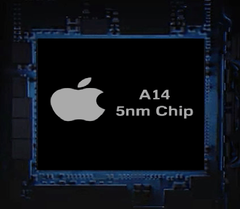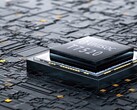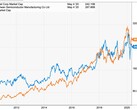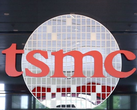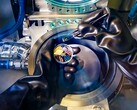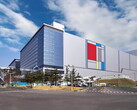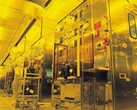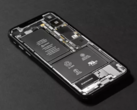TSMC is well on track for delivering 5 nm chips in the first half of 2020, since the Taiwanese foundries started 5 nm risk production in April this year. As the most prominent TSMC client, Apple is always looking to integrate the latest technologies into its SoCs, so next year’s A14 Bionic chips are naturally expected to make the jump to 5 nm EUV.
Rumors about the 2020 A14 SoCs started circulating as early as February this year; however, a recent Chinese report not only confirms that this is the case, but also informs that TSMC is already sampling the 5 nm EUV A14 Bionic chips, and Apple was supposed to receive some test samples this September.
The A13 Bionic manufactured on the non-EUV 7 nm node from TSMC is clearly faster than its predecessor, but it also requires a bit more energy. Accordingly, Apple fitted the new iPhone 11 models with larger batteries, which slightly increased the thickness of the devices. The 5 nm node should reduce the energy requirements by 20% once again, yet it remains to be seen how Apple chooses to fine tune the performance per watt of the A14 chips, as the company could opt to repeat the A13 scenario.
Hoping to see more affordable high-end iPhones next year? According to the Chinese report, that would be highly improbable because the die shrink comes with a glaring downside: the net die per wafer ratio will be reduced and the wafer price would thus increase. This means that we might actually see even more expensive handhelds. Although, judging from previous market research, iPhone fans would not mind a price increase too much, and it should all go according to plan.
I first stepped into the wondrous IT&C world when I was around seven years old. I was instantly fascinated by computerized graphics, whether they were from games or 3D applications like 3D Max. I'm also an avid reader of science fiction, an astrophysics aficionado, and a crypto geek. I started writing PC-related articles for Softpedia and a few blogs back in 2006. I joined the Notebookcheck team in the summer of 2017 and am currently a senior tech writer mostly covering processor, GPU, and laptop news.
> Expert Reviews and News on Laptops, Smartphones and Tech Innovations > News > News Archive > Newsarchive 2019 10 > TSMC already sampling Apple's 5 nm A14 Bionic SoCs for 2020 iPhones
Bogdan Solca, 2019-10-22 (Update: 2019-10-22)


